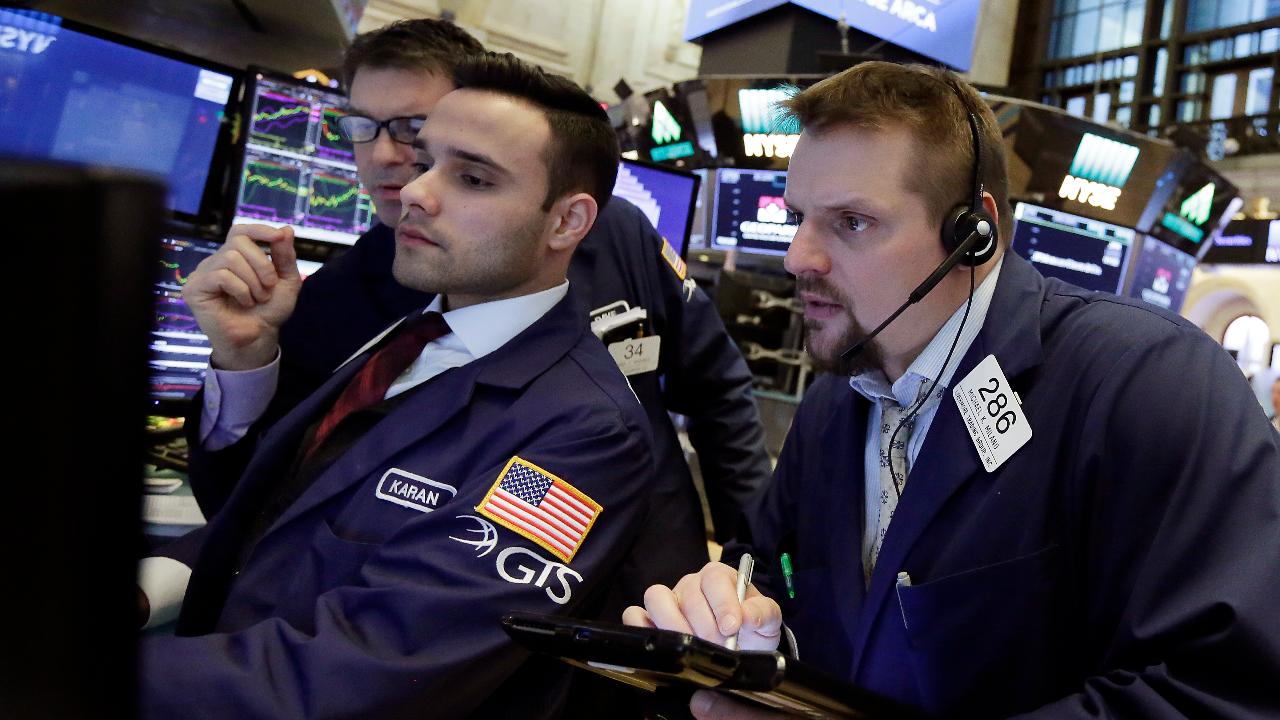Stocks rise to cap roller-coaster week
Stocks extended a roller-coaster week Friday, ending higher after swinging between gains and losses.
The Dow Jones Industrial Average surged 330.44 points, or 1.38%, to 24,190.90. The S&P 500 gained 38.55 points, or 1.49%, to 2,619. The Nasdaq Composite rose 97.33 points, or 1.44%, to 6,874.49.
Intense volatility has gripped the market over the past week amid investor concerns over rising inflation. A broad sell-off pushed the Dow and S&P 500 into correction territory Thursday, marking a decline of at least 10% from their 52-week highs. The Dow suffered its two largest one-day point declines in history on Monday and Thursday, contributing to the blue-chip index’s worst week since January 2016. Meanwhile, a spike in the CBOE Volatility Index—known as Wall Street’s “fear gauge”—battered traders who had bet on continued stability on Wall Street.
The VIX, which hit a new 52-week high of 50.3 earlier this week, retreated about 13% to 29.06.
Friday marked the sixth day in a row that the Dow has swung more than 500 points from the day’s high to its low. That marks the most volatile period since Oct. 17, 2008, during the financial crisis when there were seven such days in a row.
While the major U.S. stock indexes oscillated between gains and losses before the opening bell, shortly before trading was scheduled to open they moved into positive territory and continued that momentum through the open. Stocks saw more wild swings through the session with the Dow falling as much as 500 points before rallying in afternoon trading.
Investors will be closely watching the Federal Reserve, which is expected to hike interest rates three times this year starting in March. Low unemployment and stronger wage growth could encourage policymakers at the central bank to raise interest rates faster. But analysts suggest that market fundamentals, including a strong earnings season, contribute to a bullish outlook for stocks in the long run.
“Considering positive economic data and rising corporate profits, we remain favorable on the longer-term investing environment despite the near-term volatility, as leveraged trades continue to unwind in a messy and choppy fashion,” John Lynch, chief investment strategist at LPL Financial, wrote.
The yield on the 10-year Treasury bond rose as high as 2.86% after hitting its highest level in four years Monday. The benchmark rate remained positive for the day, trading near 2.85% Friday afternoon. Yields climb as bond prices fall.
Oil prices also slid, clinching their worst week in two years. West Texas Intermediate oil futures tumbled 3.2% to $59.20 a barrel. According to Baker Hughes’ latest rig count, released Friday afternoon, U.S. drillers added 26 oil rigs this week, boosting the count to 791. This is the highest level of drilling activity since April 2015.
Gold prices fell about $2, or 0.15%, to $1,316 an ounce.




















